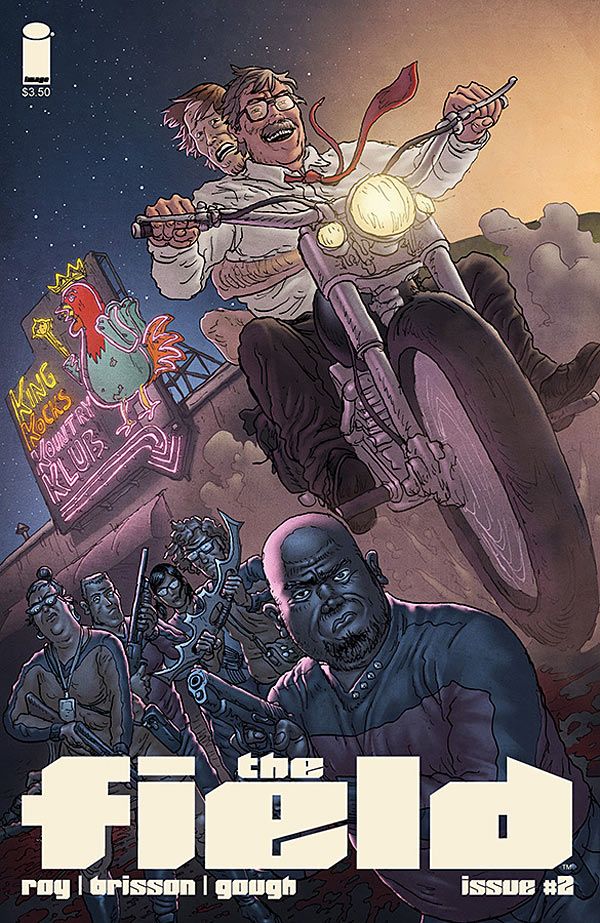Some of the smaller questions are answered but even larger ones are raised anew in "The Field" #2, as writer Ed Brisson begins to reveal that there is far more behind the odd circumstance that kicked off the series. Artist Simon Roy and colorist Simon Gough add a hazy, surreal quality to certain sequences that both address and deepen the mystery, and all three creators combine to deliver a fascinating enigma that easily sells readers on the series' two remaining issues.
When the title's then-unnamed protagonist awoke in a field at the start of last issue, amnesic and clad only in his Fruit of the Looms, Brisson pretty much had readers at hello. But he hasn't relied solely on that hook, and his expansion of the mystery has not only let readers know that this isn't about some guy sleeping off a drunken bender; it's in fact something far bigger, bigger even than things seemed at the end of that first issue. Building up a mystery is a very fragile task for a writer; both too much and too little intrigue can drive readers away, but Brisson perfectly walks the center of that fine line to keep readers engaged. He captivates his audience in an almost J.J. Abrams-like fashion, where the apparent story turns out to be part of a much larger picture that couldn't be foreseen.
Roy delivers the story in a straightforward enough manner; a couple of splash pages are interspersed with the remainder that rely on traditional rectangular panel layouts. This conservative approach suits Brisson's story by rendering it clearly without detracting from it. Roy gets his moments, though, during some of the more violent Tarantino-meets-underground comix sequences, where over the top crashes and gunplay result in some pretty intense injuries. And blood; lots of blood. Roy gets the point across, with plenty of help from Gough, and all within the context of multi-panel pages. The team of Simon & Simon are confident enough to know they don't need a full page to convey what happens when a human head makes violent contact with pavement, and smart enough to know that Brisson's story doesn't need it, either.
Roy and Gough also collaborate superbly on the flashback sequences, as envisioned by the story protagonist who can only recall fragmented segments of recent events. These scenes are muddled and color-drenched; deliberately so, convincingly capturing the blurry, hallucinogenic, through-the-drinking-glass feel of these dreamlike flashes. Believably portraying how the human mind might try to reconstruct and visualize a forgotten memory is all but impossible, but Roy and Gough pull it off as well as any art team could.
"The Field" #2 is a terrific, pulpy, and perfectly paced chapter of this far-reaching mystery, and a great example of the capability of a strong synergy between a writer and art team.

